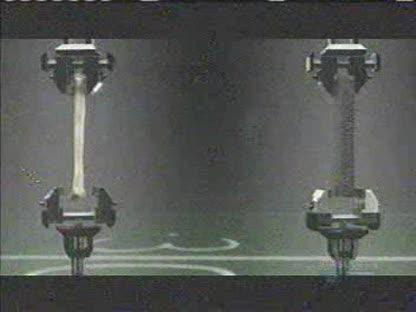Snap Judgment #33: DEM BONES!
SNAPPLE FACT #1388: Human thigh bones are stronger than concrete
Verdict: True
As with most of our facts here, this requires a caveat. The straight and simple is that the strength of a femur, the longest and most durable bone and our body, depends on the angle of the pressure that is applied to it. At its weakest, the average femur will break from about 20 lbs. of force applied to it at a 90 degree angle. Not much.
This is why car crashes and failed trampoline tricks usually result in the majority of femur breaks. However, at its most ideal load-bearing condition, which is top to bottom of the bone, the femur can withstand 899 pounds of force. This is one of the reasons some extremely morbidly obese people can still move freely. The femur has tons of weight accounted for. This is mainly due to the femur’s light-weighted fibrousness (lots of pores) and flexiblity. These factors make it 12x stronger than a proportionally sized piece of concrete. But that’s not all…
Femur are stronger than steel!
Proportionally by weight, at least. This is actually why a lot of structures like bridges and building frames aren’t just solid walls of metal. Bones are so efficient at staying light weight and yet still durable that some of our own infrastructure is built upon their properties. It’s efficient, cost effective, and arguably aesthetically pleasing. Though, I do kind of want to see a bridge of bones. That weird?
-Ryan
https://www.youtube.com/watch?v=jlz8O4VMO4o
http://interesting-shocking-facts.blogspot.com/2014/02/the-human-thigh-bone-is-stronger-than.html






